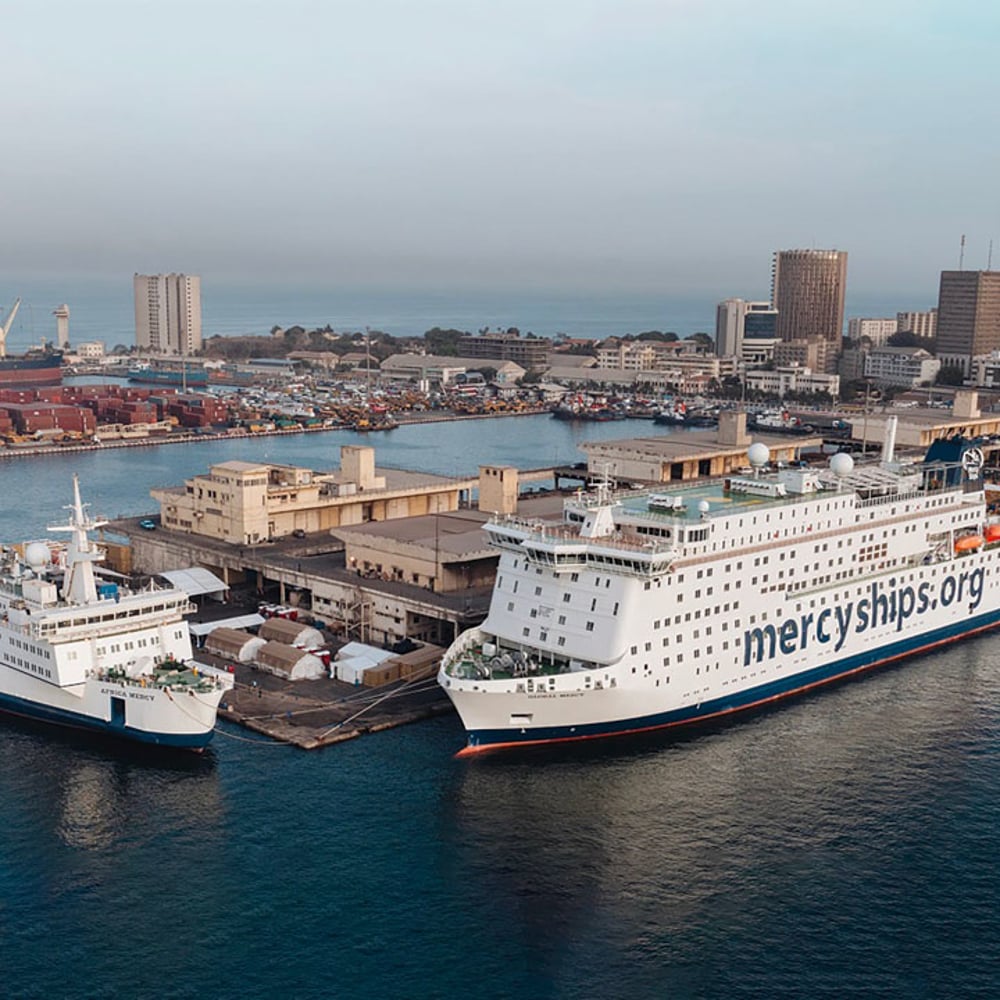Central to the vision of medical charity Mercy Ships is the belief that the corrective operations and hospital care it offers free of charge to some of the world’s poorest disabled and sick in sub-Saharan Africa, should be of lasting benefit to their communities as well.
Local doctors and nurses are encouraged to take part in shipboard surgery to observe and learn new skills so that they can provide the same services after the ship departed and “sustainable benefit” is created, explains Justin Ray, Vice President of Operations (pictured right).
Mercy Ships’ surgical interventions tend to fall into six main areas: maxilla-facial; ophthalmic; dental and facial; plastic surgery – such as skin grafts after burns; orthopaedic, mainly on club feet and bowed legs; women’s gynecological surgeries, usually for mothers after childbirth; and general surgery. Patients are of all age groups, about half adults and half children.
According to Ray, a total of around 2.8 million people have directly benefited from Mercy Ships’ four-and-a-half decades of services, that number includes patients, their families and local healthcare professionals.
The organisation’s original hospital ship was replaced by the 150-metre Africa Mercy®, an ex-rail ferry, in 2007. Then a first newbuilding was added in 2020, the 174-metre Global Mercy™ the world’s first purpose-built and largest, non-governmental hospital ship. LR has worked with Mercy Ships since its outset and supervised building of the new vessel, by Stena RoRo, which sails under LR class.
The hospital area of Global Mercy covers 7,000 square meters, housing six operating theatres, 102 acute care beds, seven intensive care beds and 90 convalescent beds. In terms of design, hospital ships are not greatly different to ropax vessels, only with a different interior configuration that allows plenty of space around individual beds and wider corridors to allow easy manoeuvring of trolley beds and wheelchairs.
Ray, a trained marine engineer and naval architect, explains that the needs of a hospital and a ship are in many ways similar, both healthcare and shipping being “highly regulated, because of their high degree of risk and complexity.” What’s essential, he adds, “is to make the ship feel like a hospital.”
Technically, a key requirement of a hospital ship is to have safe distribution of low-voltage electrical power throughout, an area that LR has worked with Mercy Ships to optimise. This includes considerations of redundancy and UPS (Uninterrupted Power Supply) to guard against the event of a voltage spike or power outage. HVAC (heating, ventilation, and air conditioning) systems are another key area, both for patient welfare and management of pharma supplies requiring refrigeration.
Naturally, onboard hygiene and sanitisation measures are also an area of paramount concern – especially since the onset of Covid-19. Mercy Ships was forced to pause surgeries onboard ship during the height of the pandemic and only restored them fully in February 2022, observing the Safe Return to Cruising protocols developed for the passenger ship industry.
As regards marine operations, Mercy Ships benefits from carefully crafted protocol agreements that are in place before a ship enters any country. An advance team is sent in to negotiate with the government and health authorities concerned, covering areas such as berth access, security requirements, waiver of customs and visa formalities, and preferential tariff arrangements.
“Generally, governments will waive customs and other tariffs,” Ray points out, adding that maritime suppliers take a similarly generous approach, notably liner giant MSC which provides free-of-charge transportation for all medical supplies from warehouse to vessel. In practice, however, the priority berthing and priority access for hospital ships may present problems for other port stakeholders, he adds, but again Mercy Ships has a special team to help smooth such issues.
Crewing presents an interesting situation given Mercy Ships’ reliance as far as possible on volunteers, as well as wanting to employ local personnel. Medical staff do not pose a problem but it’s more difficult to find suitably qualified officers and ratings from African countries.
To this end, Mercy Ships runs a Maritime Training Centre at its HQ in Texas, which to date has focused mainly on maintaining STCW credentials of experienced crew, assisted by South Tyneside College, UK. But a gap is perceived in the provision of introductory training for totally inexperienced young men and women volunteers, many from West African countries.







